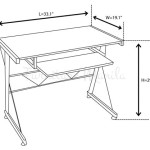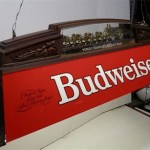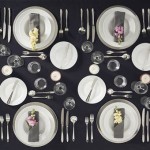How to Serve the Table: A Guide to Elegant and Efficient Dining
Dining is a social activity that involves the sharing of food and company. A well-served table fosters a pleasant and enjoyable atmosphere, enhancing the overall dining experience. Mastering the art of table service requires attention to detail, organization, and a dash of elegance. This guide will equip you with the necessary knowledge and techniques to confidently and skillfully serve the table, whether for a casual dinner with friends or a formal gathering.
1. Understanding the Fundamentals of Table Setting
The foundation of elegant table service lies in a meticulously prepared table setting. Each piece of cutlery, glassware, and linen plays a specific role in creating a visually appealing and functional dining environment. Familiarize yourself with the standard table settings, including:
- Dinner plate: The largest plate, serving as the base for all other dishes.
- Bread and butter plate: A smaller plate placed to the left of the dinner plate.
- Napkins: Folded neatly and placed to the left of the forks or on the dinner plate.
- Cutlery: Forks are placed on the left, with knives on the right, both with blades facing inward. Spoons are placed on the right, above the knives.
- Water goblet: Positioned above the knife, with a wine glass to the right of the water goblet.
Remember to maintain a consistent distance between each piece of cutlery and glassware, creating a balanced and visually appealing arrangement.
2. Mastering the Art of Serving Food and Beverages
Serving food and beverages with grace and efficiency is crucial to a seamless dining experience. Here are some essential tips to follow:
- Serve food from the left: Approach guests from their left side when presenting dishes. This minimizes the risk of bumping elbows or obstructing their view.
- Offer beverages from the right: Serving beverages from the right allows guests to comfortably raise their glasses without disturbing others.
- Present food with care: Use serving spoons and tongs to safely and neatly distribute food. Avoid overloading plates and ensure all guests receive a balanced portion.
- Clear dishes efficiently: Remove dirty plates and utensils from the right side of the guest. Stack plates neatly and avoid clinking silverware.
When serving multiple courses, remember to remove the preceding course's cutlery and glassware before presenting the next dish. This practice streamlines the dining experience and maintains an organized table setting.
3. Ensuring Smooth and Efficient Service
Exceptional service is about anticipating needs and providing a seamless dining experience. Consider these points to enhance your table service:
- Be attentive:Observe guests' cues and be prompt with refills, clearing plates, and any other requests. Maintain a discreet yet attentive presence.
- Communicate effectively: Engage in courteous conversation with guests, addressing their inquiries and offering suggestions about the menu or wine pairings.
- Maintain a professional demeanor: Present a composed and confident appearance. Avoid distractions or unnecessary gestures that may disrupt the dining experience.
- Stay informed: Familiarize yourself with the menu and beverage offerings to provide accurate information and recommendations to guests.
By following these guidelines and exhibiting a genuine desire to provide excellent service, you can create a memorable and enjoyable dining experience for your guests.

How To Set Your Table For Any Dinner Party

How To Set The Table For Any Occasion Grain Frame

Serving Tables

How To Set A Table 3 Ways The Home Depot

Trending Table Settings Eventful Projects Conference And Event Management

How To Set A Table 3 Ways The Home Depot

How To Serve A Formal Dinner With Marta Perrone

How To Serve Food Correctly

Types Of Service And Table Settings In Waiter Waitress Training

How To Serve A Fancy Dinner Maggie Whitley
Related Posts








